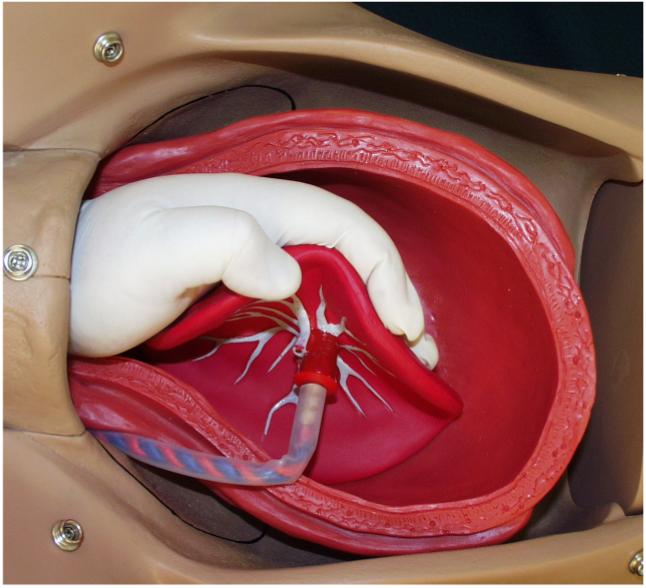|
Retained Placenta |
|
 After delivery of the baby, the placenta
normally detaches from the inside of the uterus and
is expelled, often with additional pushing efforts by the mother. Normally this
occurs within a few minutes of delivery of the baby, but may take as long as an hour.
After delivery of the baby, the placenta
normally detaches from the inside of the uterus and
is expelled, often with additional pushing efforts by the mother. Normally this
occurs within a few minutes of delivery of the baby, but may take as long as an hour.
The four signs of placental separation are:
- Apparent lengthening of the visible portion of the umbilical cord.
- Increased bleeding from the vagina.
- Change in shape of the uterus from flat (discoid) to round (globular).
- The placenta being expelled from the vagina.
Commonly, after about 30 minutes of waiting or if there is increased bleeding without evidence of placental separation, a manual removal of the placenta is undertaken. Anesthesia (regional or general) is typically used for this as manual removal can cause considerable abdominal cramping. Sometimes, IV narcotic analgesia will prove helpful in relieving this discomfort
Manual Removal of the Placenta
One hand is inserted through the vagina and into the uterine cavity.
- Insert the side of your hand in between the placenta and the uterus. You may need to push through the placental membranes to accomplish this.
- Using the side of your hand, sweep the placenta off the uterus.
- After most of the placenta has been swept off the uterus, curl your fingers around the bulk of the placenta and exert gentle downward and outward traction. You may need to release the placenta and then re-grab it.
- Then pull the placenta through the cervix. Most placentas can be easily and uneventfully removed in this way. A few prove to be problems.
Placenta Accreta and Percreta
When you manually remove the placenta, be prepared to deal with an abnormally adherent
placenta (placenta accreta or placenta percreta). These abnormal attachments may be
partial or complete.
- If partial and focal, the attachments can be manually broken and the placenta removed. It may be necessary to curette the placental bed to reduce bleeding. Recovery is usually satisfactory, although more than the usual amount of post partum bleeding will be noted.
- If extensive or complete, you probably won't be able to remove the placenta in other than handfuls of fragments. Bleeding from this problem will be considerable, and the patient will likely end up with multiple blood transfusions while you prepare her for a life-saving, post partum uterine artery ligation or hysterectomy. If surgery is not immediately available, consider tight uterine and/or vaginal packing to slow the bleeding until surgery is available.


